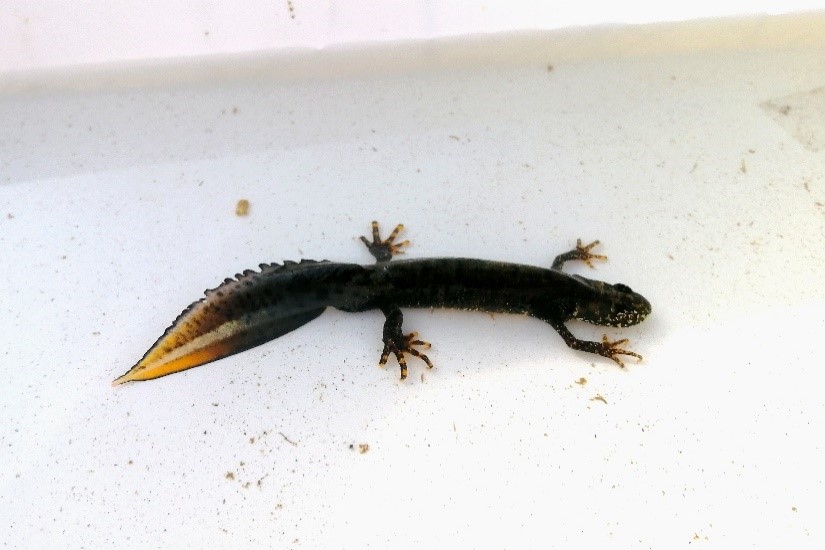
Over £91,000 allocated to protect newts and other species
New freshwater habitats and wetlands will be created in East Hanney, Garford and Grove to help provide an ideal environment for wildlife to thrive, including protected species such as Great Crested newts.
Cabinet members at Vale of White Horse District Council agreed to allocate £91,232 of developer contributions; money collected as part of developers’ agreements to build new homes in the area.
The funds will go to the Freshwater Habitats Trust, an Oxfordshire charity, to create wetland habitats and floodplain restoration at Manor Farm, which has sites in Garford and East Hanney, and Wantage Sewage Treatment works in Grove.
Manor Farm will install ten various sized pools to support many species including newts, reptiles, invertebrates, waterfowl and migrating birds. On a different site owned by Manor Farm, a floodplain will be sympathetically managed to support wildflowers, fungi, insects and ground nesting birds such as curlews.
At the Sewage Treatment works, two clean water ponds, a butterfly bank and restoration to an existing pond will be created. This area aims to encourage Great Crested news, invertebrates, grass snakes and migrating birds.
Cllr Judy Roberts, Cabinet Member for Development and Infrastructure at the council, said: “We’re delighted to be able to allocate developer funds to help support so many different freshwater habitats. It forms an important part of our work to help tackle climate change and its one way in which we can help to create safe havens for nature, while balancing the need for new homes in our district.”
Hannah Worker, Project Officer at Freshwater Habitats Trust, said: “We’re extremely excited to get excavators on site and to start delivering these exciting opportunities for floodplain restoration and clean water pond creation.
“I can’t wait to get to the good bit when the wildlife starts moving in. In its early stages, the bare open margins of the wetland complex will be ideal for wetland birds such as lapwing and snipes hunting for tasty invertebrates. At both sites, as plants start to establish, we hope to see stoneworts and pondweeds moving in along with many species of dragonflies, water beetles and water bugs. It’ll be fascinating to watch the sites develop.”
Work will start in September and all three sites are expected to be completed by next summer.

